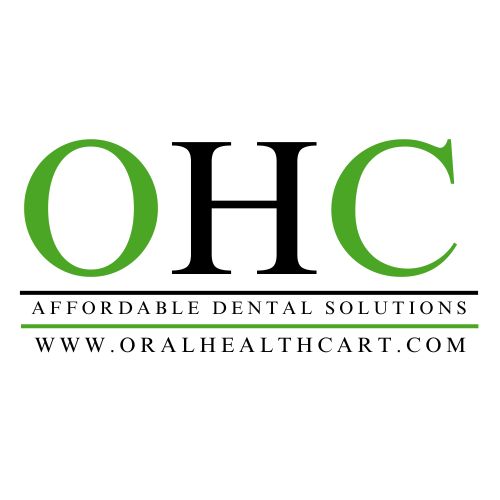Top Mistakes Dentists Make When Using Elevators And How To Avoid Them
The Dental Cart
.jpg)
Top Mistakes Dentists Make When Using Elevators And How To Avoid Them
Dental elevators are necessary for dental surgery and extractions. These precision tools are designed to loosen teeth and roots with minimal trauma before forceps are applied. But even the best dental elevator can become a liability in the hands of someone using it incorrectly.
At Oralhealth Cart, we often hear from practitioners who face complications not due to poor-quality tools—but because of improper technique or oversight during procedures. So, if you want to ensure safe, effective, and comfortable extractions for your patients, this guide is for you.
Here are the top mistakes dentists make when using elevators—and how to avoid them.
Mistake #1: Using the Wrong Type of Elevator
Dental elevators come in various shapes and sizes—straight, cryer, periosteal, root tip picks—and each is designed for a specific purpose. Using the wrong elevator for a particular case can make extractions difficult and traumatic.
How to Avoid It:
-
Know your tools. Train your staff and yourself to understand the functions of each elevator type.
-
Match the elevator to the tooth. For example:
-
Use straight elevators for anterior teeth.
-
Use Cryer or Winter elevators for molars with a lot of roots.
At Oralhealth Cart, we label each tool clearly and provide guidance on proper application to help dentists avoid this very issue.
Mistake #2: Applying Excessive Force
Elevators are meant to be leverage tools, not pry bars. Excessive force application can result in:
-
Root fractures
-
Damage to surrounding bone
-
Instrument slippage, risking injury to soft tissues
How to Avoid It:
-
Use controlled, slow pressure rather than brute force.
-
Let the design of the elevator do the work.
-
Train in tactile sensitivity during extractions.
Pro tip from Oralhealth Cart: Our ergonomically designed elevators offer better grip and leverage, minimizing the need for excess pressure.
Mistake #3: Poor Fulcrum Placement
It can be harmful to use nearby teeth or unstable places as a fulcrum. In some cases, adjacent teeth may get luxated or fractured.
How to Avoid It:
-
Always position your fulcrum on a solid bony surface, never on another tooth.
-
Use gentle, rotational motion to build gradual movement.
A poorly placed fulcrum can turn a simple extraction into a complex surgical case. Be precise and patient.
Mistake #4: Not Sharpening or Inspecting Elevators Regularly
Using dull, bent, or damaged elevators leads to:
-
Ineffective performance
-
Greater trauma to the tissues
-
Shortened instrument lifespan
How to Avoid It:
-
Inspect tools before every procedure.
-
Replace instruments with corroded, blunt, or damaged tips.
-
Maintain a sharpening routine or invest in quality tools with long-lasting edges.
At Oralhealth Cart, our dental elevators are crafted with surgical-grade stainless steel that retains sharpness through repeated sterilizations.
Mistake #5: Improper Sterilization Between Uses
Failing to sterilize or clean elevators properly can lead to cross-contamination and infection.
How to Avoid It:
-
Follow instrument care protocols: pre-rinse, ultrasonic clean, dry, then autoclave.
-
Use sterile pouches for post-sterilization storage.
-
Don’t reuse instruments without a full cleaning cycle.
We provide detailed care guides with every instrument purchase at Oralhealth Cart—because a clean instrument is just as important as a sharp one.
Mistake #6: Skipping Training or Refresher Courses
Many dental professionals assume that once they’ve learned extractions, there's no need to revisit technique. But elevator usage requires precision that benefits from periodic retraining.
How to Avoid It:
-
Invest in continuing education focused on surgical instrumentation.
-
Conduct regular hands-on training for new team members.
-
Review complications from past procedures to improve technique.
Oralhealth Cart collaborates with training institutes and hosts instrument handling workshops—because great tools need skilled hands.
Mistake #7: Overreliance on Elevators Alone
Some dentists try to complete entire extractions with elevators, even when forceps or sectioning is needed. This can be risky and ineffective.
How to Avoid It:
-
Know when to stop and switch to forceps or surgical extraction techniques.
-
Evaluate root morphology and surrounding bone before overusing the elevator.
Use elevators as part of a comprehensive extraction protocol, not a one-size-fits-all solution.
Bonus Tip: Invest in Quality Elevators from Trusted Suppliers
Even the most skilled dentist can be held back by poor-quality instruments. If your elevators:
-
Dull quickly
-
Bend under pressure
-
Feel unbalanced in han
...it’s time to upgrade.
At Oralhealth Cart, we supply CE-certified, ergonomically designed, surgical-grade dental elevators that help you perform extractions with confidence, comfort, and precision.
Small mistakes with dental elevators can lead to big complications—but with the right training, awareness, and tools, you can avoid them all.
Top mistakes dentists make when using elevators—from poor instrument choice to lack of maintenance—can all be prevented by staying informed and using high-quality tools like those offered by Oralhealth Cart.
Categories: Prostho Instruments


 Oralhealthcart Products
Oralhealthcart Products

